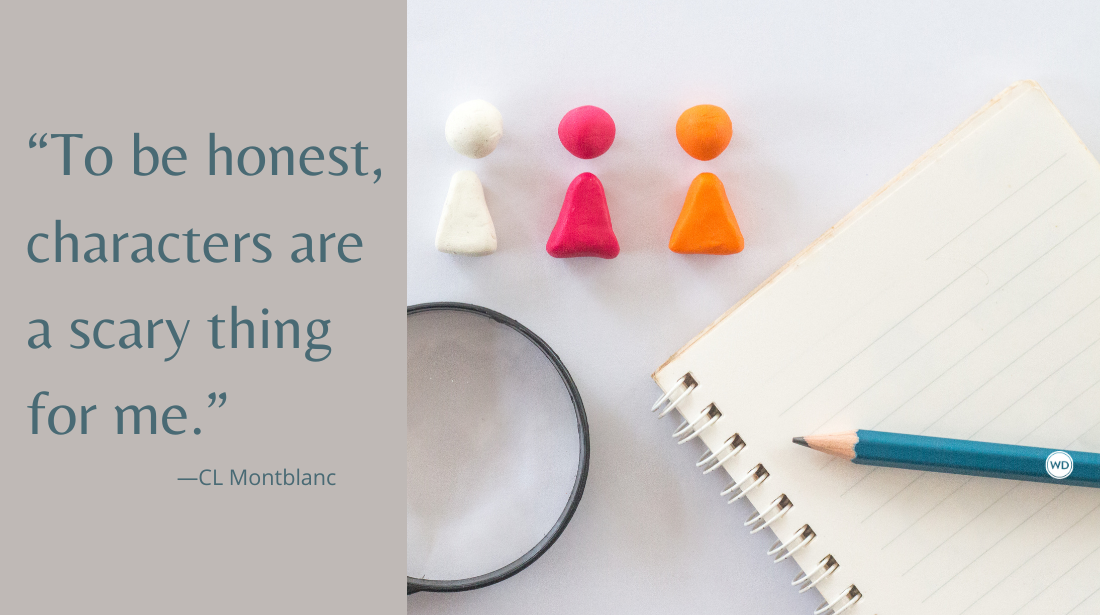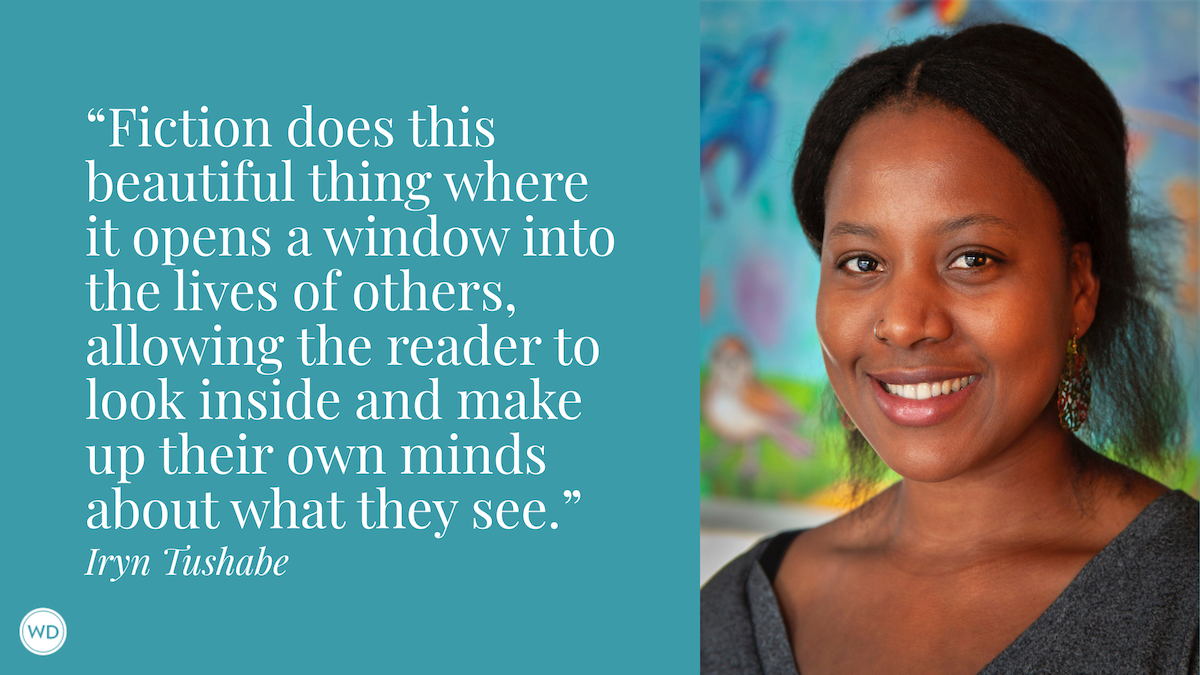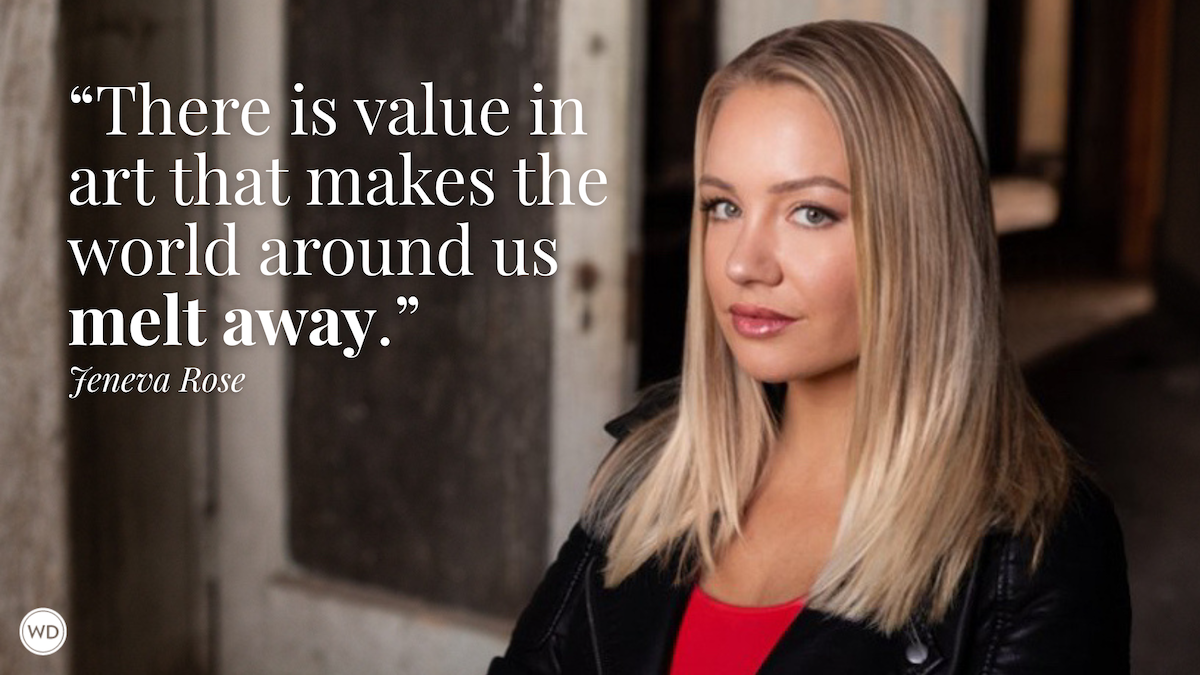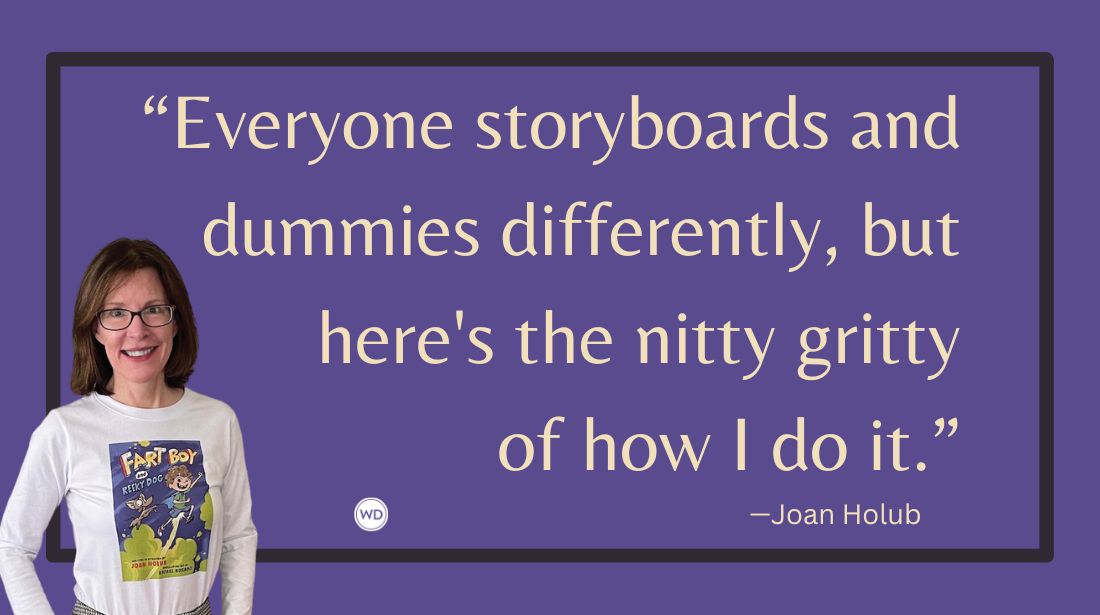How to Craft Characters Scene by Scene
Dimensional characters are born from drama—not description. Here’s why (and how) to delve into your characterizations one defining scene at a time.
Dimensional characters are born from drama—not description. Here’s why (and how) to delve into your characterizations one defining scene at a time.
Order a copy of David Corbett's The Art of Character: Creating Memorable Characters for Fiction, Film, and TV.
Bookshop | Amazon
[WD uses affiliate links.]
In The Art of Dramatic Writing, Lajo Egri encourages writers to craft detailed biographies of their characters focusing on three principle areas: physical, psychological and sociological.
I obediently employed this method for my first two novels, only to find it lacking. Inevitably, I’d end up with a static laundry list of information that helped me describe the characters but offered little guidance in dramatizing how they might behave.
Ultimately I discovered the truth to what many writers had told me (but I hadn’t quite believed)—that once the writing started, the characters took on “lives of their own,” taking me in directions I hadn’t anticipated.
Now that’s all well and good as long as the characters take you somewhere interesting. But even interesting characters can’t rescue a meandering narrative (the proverbial “Beginning, Muddle and an End” that Philip Larkin famously bemoaned).
So: How to get in all the critical information the “laundry list” biographical method attempts to accumulate (and dismiss with the irrelevant information it obliges), and also gain the living, breathing vividness of characters with minds of their own?
The key, I discovered, is scene.
How Action Reveals Character
The fact that scenes can open up a character in a unique and powerful way exposes a simple, fundamental truth: Characters reveal themselves more vividly in what they do and say than in what they think and feel.
Words and actions involve choice. They show the character making decisions and dealing with the consequences in an immediate way, revealing values (the preference for one option over another) and character (the resilience to see a choice through).
Scenes test character. And we reveal ourselves most unequivocally when we’re tested. It often matters little how we feel or what we think—thoughts and feelings can be changed, replaced by other thoughts and feelings. Our actions, on the other hand, occur in the world, and cannot be taken back. Our inner lives matter in exact proportion to how much they motivate what we do.
What to Explore, What to Ignore
What I’m about to discuss is most critical when creating your protagonist, though it also can be valuable when developing your opponent (so that you make sure the conflict between these two main characters is meaningful and interesting, not just a clash of wills or personalities) and key secondary characters (those who have a profound emotional impact on the main characters). Just don’t get bogged down in creating backstory for characters who don’t really need it; that’s nothing but an industrious form of writer’s block.
To the greatest extent possible, focus on envisioning scenes that serve a purpose in your story-in-progress, or that reflect meaningfully on the character. That said, dreaming up emotionally revealing scenes that you may ultimately discard is no waste of time; it’s an inevitable part of the writing process.
Whether or not they have a place in your final story, it’s important to delve into key moments of real emotional impact—scenes of helplessness—that in some way changed the character’s life, her understanding of herself, her standing among others. There’s no need to craft these backstory/
biographical scenes into final form. Mere sketches will do, enough to give you a vivid impression of the character.
Before you begin, try to have a basic understanding of your story, especially the three basic elements that will make it dramatic:
- The Problem: What the main characters want, both consciously and unconsciously, and what stands in their way, both internally and externally. (Often, what stands in the way is each other. Their wants are irreconcilable.)
- The Insight: The crucial revelation the character gains about himself and/or his world in his struggle (and failure) to solve the Problem. (This is most true, and often only true, of the protagonist.)
- The Decision: The life-changing choice prompted by the Insight, allowing the character one last chance to solve the Problem. (Again, this is primarily
applicable to the protagonist, though it sometimes can be interesting for the opponent to make a similar, opposite choice.)
Once you have a decent understanding of those elements of your story, you’ll have a ballpark idea of what biographical information from a character’s past is most valuable to pursue. You’ll also have a reasonably good idea of what secondary characters need to be in the story, what roles they’ll play and how deeply you need to understand them.
For example, if the character’s Problem involves falling in love, then issues of commitment and self-worth will often be part of her Problem. So you’ll want to explore past moments of pride and success as well as shame and rejection to flesh out how she’s come to feel the way she does about herself, and how she behaves toward people she’s attracted to. Her Insight will require understanding how these past incidents have shaped and limited her. Her Decision will involve a determination to somehow overcome them.
If the character’s Problem instead involves facing some terrifying ordeal, such as combat or tracking down a killer, you’ll want to explore past moments of panic and courage, and key interactions with figures such as parents, teachers, coaches, siblings, teammates—moments in which the character’s notions of strength, loyalty and worth were defined, shaping how he would grow to respond to challenge, danger and authority.
Again, it may turn out you explore areas of the past that never appear in the final text. But through seeing the character in these life-defining moments, she becomes palpably more real to you. And that translates into a fuller, more engaging portrayal on the page.
How to Add Dimension Using Drama
As noted earlier, the three main areas of characterization that most writing instruction focuses on are:
- Physical (sex, race, age, attractiveness, health)
- Psychological (love, hate, fear, pride, shame, guilt, success, failure)
- Sociological (class, education, work, family, friends, home)
These remain our key areas of concern, but instead of just accumulating information, ask: How does my character’s physical, psychological and sociological makeup affect his interactions with others? This forces you to picture the character in scenes, in which this or that element of his
personality or past affects how he interacts with the other characters in the story.
You do not have to explore all or even most of the following areas for any particular character. Rather, pick two or five or 10 areas you find particularly interesting or productive, or which speak to the needs of the particular character given the Problem, Insight and Decision at hand. If you need more, the story will let you know.
The Character’s Physical Nature
This goes beyond what your character looks like. The focus should be:
- How does my character’s appearance make her feel?
- How does it make others feel about her?
- How do these feelings translate into behavior?
Imagine a few crucial scenes where appearance had a decisive effect at a key moment in her life.
Race: The fact that your character is Caucasian or African American or Latino or Asian is meaningful primarily in the way it’s shaped how he understands and navigates the world. Don’t be general: Imagine one or more pivotal scenes in his life when his race played a critical factor in whether or not he got what he wanted.
Age: How does your character’s age affect how she engages with others?
- Is she a partying 20-something? A buckle-down 30-something? A disillusioned 40-something?
- Is she young but wise, having already suffered but survived some terrible loss? (What was it?)
- Is she old and sheltered? (Who has protected her?)
Health: Just because your character appears in your mind’s eye as in the pink doesn’t mean he hasn’t at some point battled death. When in his life was he most ill? Who, if anyone, took care of him? How has this affected his understanding of his physical vulnerability? Considering
that scenario alone can often open up a character in a
fascinating way.
Attire: It’s not just how the character dresses that’s important, it’s important to know how she prepares herself to be seen by others:
- Who does she most want to impress—or hide from—with how she dresses? Her friends? A lover? A rival?
- How much time does she spend getting dressed? Imagine it. Watch her. Allow it to unfold.
Sexual Attractiveness: Our sex lives define us in perhaps the most intimate—and thus vulnerable—ways. Imagine:
- A time when the most beautiful woman in the room found him attractive.
- A date when someone felt disgusted or turned off by the way he looked—and the moment when this became painfully clear. How deep and long-lasting is that wound?
The Character’s Psychological Nature
Areas to explore:
Fear: Conflict engenders fear, because something is at stake, and the prospect of losing is always there. What moment of profound terror or dread changed your character’s life, her confidence, her sense of safety and control?
Courage: Your story may well concern how your character learns to master or control a debilitating fear. What moment of courage provided your character with confidence that he could take care of himself if facing danger?
Love: Who and what your character loves defines what is most valuable to her, and what she feels most compelled to defend.
- Who does your character love? Is he in her life? If not, what happened (scene!)?
- When did she first realize what it means to love and be loved?
Hate: Even good people have hatred in their hearts. Imagine a scene where your character gave in to an overwhelming feeling of hatred for someone else.
Shame: Humiliation is invaluable for characterization because it involves status among others. When was your character most ashamed? What did he do, and who else was present? What form did the humiliation take? Disgust, abandonment, pity, ridicule?
Guilt: Something morally wrong—an act of cruelty, a theft, a murder, a lie—inspires guilt. What’s the worst thing your character has ever done? Who was hurt by it?
Forgiveness: Mercy is a rare state of grace, given the human heart’s propensity for clinging to grievances.
- Was your character ever forgiven for the worst thing she did?
- Has she ever forgiven someone else? For what?
Failure: How your character responds to failure is a cornerstone of who he is.
- The job he lost, the marriage that fell apart, the friend he couldn’t save: Has he bounced back? Become wiser? Or has he let that failure define him, limit him, embitter him?
- When else did your character fail terribly? How profoundly did it affect his confidence?
Success/Pride: You need to know when your character has set out to do something and achieved it, and felt that swell of pride in her own heart. Looking back on her life, what would she consider her greatest triumph? Was she allowed to enjoy it?
Food: It may seem curious to include food as an aspect of a character’s psychology, but it’s often a stand-in for gratifications the character can’t find elsewhere. Food is solace and ritual. Its preparation is almost as enjoyable as the eating. It conjures two of the senses hardest to get right on the page: smell and taste. Food mitigates hardship and rewards patience. It’s generosity. It’s love. If you’re having difficulty picturing your character, sit her down at a table and serve her what she’s hungry for, or show her dishing it up for someone else.
Death: Every hero must suffer a fundamental confrontation with mortality for his story to be meaningful. The death may be metaphorical: the destruction of one’s reputation, the loss of one’s family or livelihood. Or it may be secondhand: the demise of a cherished love, a devoted friend, a trusted comrade. But the experience must be life-changing. Picture your character’s first experience with death, his most disturbing experience with death, his most shattering loss other than death. How did each change forever his understanding of life?
The Character’s Sociological Nature
Where psychology tracks with the character’s inner life, sociology defines how he navigates the outer world.
Family: This is the crucible in which much of psychological life is forged. Many of one’s fears, wants, humiliations, etc., trace back to some episode with a family member. (This means some of the scenes that help you flesh out your character’s family background will almost certainly “double up” as scenes that help flesh out her psychological nature.)
- Picture a crucial scene between your character and her father that shaped her view of authority, responsibility, integrity. Or pick a scene when she learned once and for all if her father respected her, or when she discovered she was stronger or smarter than the old man.
- Imagine a scene when your character needed comfort, support or understanding from his mother—did he get it? Why or why not?
- Did your character’s grandparents actively engage with her, perhaps offering wisdom? Did they poison the atmosphere by finding blame with one or both of the parents? Again, think in scenes.
- Which brother(s) and/or sister(s) did the character see as an ally, an enemy or competitor—for a parent’s love, or respect at school or in the neighborhood? Picture the moment that sealed the alliance or antagonism.
Friends: Friendship is chosen freely, sustained only through mutual consent, and unadulterated by family obligation or sexual desire. Who is your character’s closest friend? When was the friendship most severely tested? Did it survive? How? Why?
Class: How does your character interact with people of lower or higher social/economic standing? Is she comfortable? Resentful? Is she invited in or kept out?
Work: What was your character’s best day on the job? Worst day? What happened at work recently—today—that tested his resolve to stay? What was the most life-changing interaction with a superior or a subordinate or a customer?
Religion/Spirituality: Whether your character is a believer or not, you need to know what forces shape her conscience and her sense of purpose in life.
- What values inform the way of life she hopes to live, the kind of person she hopes to be?
- What sins does she regularly commit?
- What sin has she never committed but might if the circumstances were right?
- What sin would she never commit?
Education/intelligence: Your character has to interact with people he considers his intellectual peers, his betters, his inferiors.
- How does his education level affect the people he talks to at work, the TV shows he likes, the jokes he tells?
- Did he have a teacher who made a difference in his life? Imagine the moment(s) when that occurred.
Home: Where does your character feel she belongs? Picture a crucial scene that conjures for your character the sense of belonging she identifies with home. Does she live there? If home is elsewhere, does she long to go back? Or has something happened—a scandal, a tragedy, a loss—that bars her return forever?
“Tribe”: Consider the group of individuals—the “tribe”—with whom your character identifies: his office mates, congregation, fellow volunteers, neighbors. Who is his closest ally in the tribe? His staunchest enemy? Imagine a scene that tests his allegiance, or where he betrays, defies or even leaves the tribe.
In conclusion, compare this:
Avery McNaughton is 22 years old, 5-foot-6, smart and a little overweight, with chestnut hair and green eyes. She was born in Boston but now lives in Houston, working as a lawyer. She dresses sensibly, lives in a two-bedroom apartment overlooking the ship channel, seldom socializes and reads voraciously.
with this:
Avery McNaughton almost died from pneumonia when she was 6 after an ice-skating accident. Her older brother Mark read to her when she was bedridden. That’s when her love of literature began. Mark died in a car accident at age 22, and Avery’s terror at “falling through the ice” returned. She’s never felt safe in the world since. She moved from Boston to Houston to escape her memories—and winter. She has no friends, wants none and dresses as though trying to be invisible.
Which one gives you a better start on a story?
David Corbett is the award-winning author of five novels, the story collection Killing Yourself to Survive and the nonfiction work, The Art of Character. David is a regular contributor to Writer's Digest. Find him online at davidcorbett.com. Follow him on Twitter @DavidCorbett_CA.








